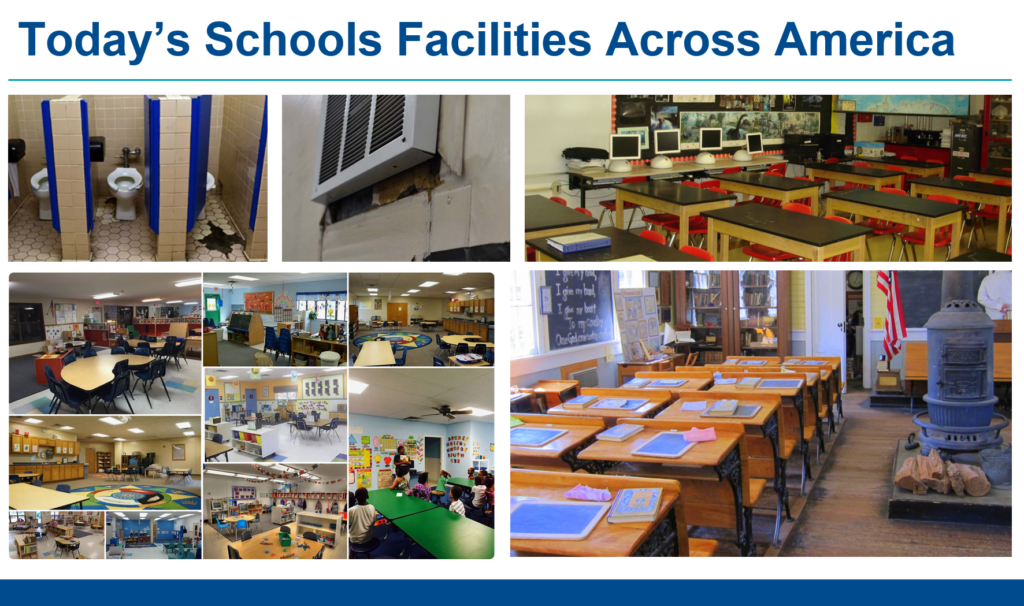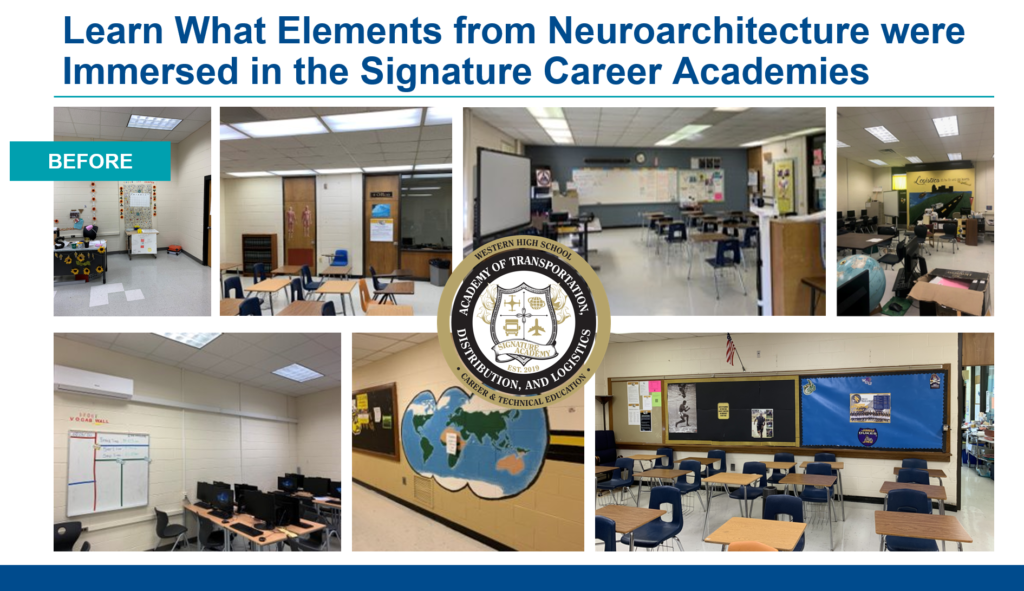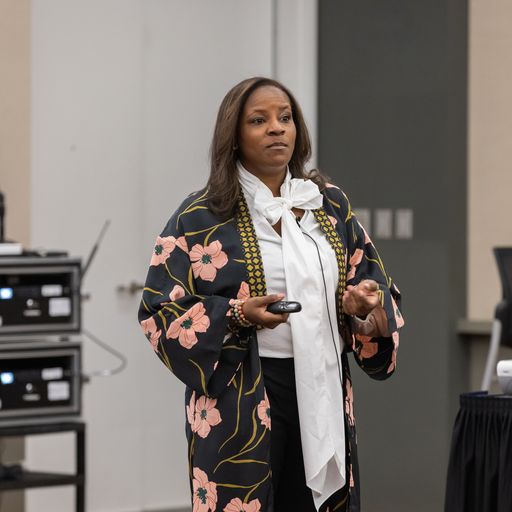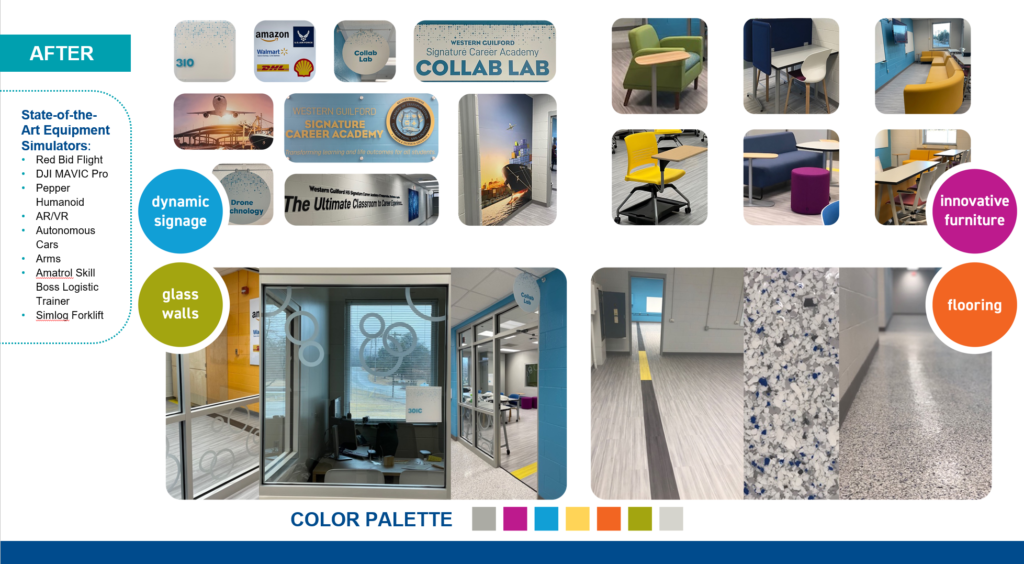We are still a long way from designing schools guided exclusively by the brains of the future users of the spaces. Still, research in neuroarchitecture describes patterns of common behavior when we are faced with certain stimuli. Our spaces considered the ways to get the brain to wire and fire together, which in-turn fosters engagement, exploration, and sanctuary for better and more profound learning in developing a students’ global skills and competencies.

A wise man once shared, “Statistics say, the more birthdays you have, the longer you live.” But the same doesn’t stand true for American schools.
42 years old | 40 years old | 16 years-old
According to National Center for Education Statistics (NCES), there have been almost 99,000 public K-12 schools in America since 1999 (the most recent data available).
- The average public-school building in the United States was 42 years old.
- The average age of rapid deterioration of most schools in the United States is 40 years old.
- The average functional age of schools was 16 years old.
Many schools have instructional buildings that have been heavily renovated since they were built and had an overall grade of D+ from the American Society of Civil Engineers as to the condition of America’s 100,000 public school buildings. For such schools, the year of their last renovation is often a better index of their age than the original construction year. In describing school age, therefore, consideration must be given to both the year of construction and the year of most recent renovation for schools that have been renovated (NCES, 1999).

The Challenge!
National Design Alliance (Reimagine America’s Schools) advocate that “over the next decade America may invest as much as $500 billion in building the nation’s public schools. American schools are the second-largest public infrastructure investment, and it’s a historic investment that will impact our children for generations to come. We simply have to get it right.”
We simply have to get it right! Designing with neuroarchitecture in mind gets it right. The problem, it seems, is that transforming education through the design of learning spaces requires more than just political will and stakeholder buy-in. It’s a fixed to a growth mindset shift, a courageous shift from designing what we’ve always known to design the unknown. It needs both architects of school buildings and educational visionaries–global change agents capable of bringing together two very different if intrinsically linked, worlds.
Neuroarchitecture aims to comprehend better the impact of architecture on the human brain and behavior.
The World Economic Forum (WEF) says we already know what these skills must be to survive an automated future; everyone must be equipped with soft skills like complex problem solving, critical thinking, creativity, people management, coordinating with others, etc. Neuroarchitecture aims to comprehend better the impact of architecture on the human brain and behavior. It amplifies the field of research about the relationship between constructed environments and their users, improving the comprehension of various messages that the environment transmits, including those on less conscious levels of perception.
Defining the scope of work for future architectural school designs and builds often involves deepening our understanding of new concepts or programs. Finding and filling gaps in our knowledge keeps us out of them being the “matter experts” to becoming the “expert imaginators” who curate relevant research. Who explore new and existing learning models within and beyond education and connect with unique voices and perspectives in various industries to test our ideas and strategies to define and refine the “newness” of school design for our “minds.”

School Districts That Incorporate Neuroarchitecture are Mindful
In Guilford County Schools located in Greensboro, NC, the first phase of Signature Career Academy (SCA) school renovation and redesign builds concluded for four sites in February 2021. The work was humbling to lead, and our teams accomplished “getting it right” with limited funding, project delays, and pivots caused by the pandemic. But we did it! These spaces are inimitable and a true testament to what Career & Technical Education advocacy, increased funding, redesign, and partnerships look like in action. School districts are encouraged to adopt regular, comprehensive major maintenance, renewal, and construction programs and implement preventive maintenance programs to extend the life of school facilities. Explore alternative financing for public school facilities, including lease financing and ownership and use arrangements, to facilitate school construction projects. That work cannot stop; every school bond referendum requires your voice and vote to improve your school system’s facilities, infrastructure, technologies, and safety measures.
Neuroarchitecture focuses on how users’ brains respond during their presence in a particular environment.
The SCAs were intelligently designed spaces with neuroarchitecture in mind! Neuroarchitecture focuses on how users’ brains respond during their presence in a particular environment. When creating spaces on neuroarchitecture, it was necessary to consider that each user received and decoded the environment’s stimuli uniquely. In other words, there were no rules, just a few things to consider. One such consideration addresses the human being’s need to belong. According to the definition by the American psychologist Abraham Maslow, the need to belong refers to the urge to be part of a social group. This theory of belonging was widely disseminated and adapted in neuroarchitecture, which considers the human need to feel like part of physical space. For example, it is well known that the brain positively decodes good memories. That is why investing in visual, auditory, or olfactory memories can be quite important when designing interiors in which users feel belonging.

We started with Learning by Design and best practices from EDspaces from the lighting, textures, glass walls, deliberate color schemes to flexible, mobile, and collaborative furniture. The use of curves, placement of words, symbolic images, wayfinding signs, spacing, sound-absorbent flooring, mood lighting fixtures, equipment, supplies, and training simulators were intentional. The design features seek to improve teaching, learning, critical thinking, creativity, communication, relationship, and retention of new knowledge.
This work is impossible without flexibility, respectful contributions, shared outcomes, and patience, coupled with a phenomenal team willing to disrupt traditional ideas. A team that will change practices and makes courageous structural and aesthetic enhancements based on neuroarchitecture. This change consists of school leaders who take risks, construction, maintenance, technology, project managers, architects, engineers, and specialty vendors who ensure spaces are one-of-a-kind, cutting-edge, and state-of-the-art for students and teachers to thrive.
True transformation to disrupt traditional designs = a total structural and systems overhaul from the ground up and the top down.

Learn What Elements from Neuroarchitecture were Immersed in the SCAs
- Experiences
- Mood Lighting
- Fixtures
- Textures
- Glass Walls
- Psyche of Color Schemes
- Flexibility & Mobility
- Collaborative & Pod Furniture
- Use of Curves
- Purposeful Placement of Words
- Symbolic Images
- Wayfinding
- Simple Spacing
- Technological Savvy
- Flexible & Freedom
- Student Voice | Student Choice
- Eat & Learn | Wellness
- Problem-Based Learning
- Presentation & People
- Inside & Outside Learning
- Design, Build & Test Hubs
- Community & Culture Integration
- Net-Zero Energy
- Cutting-edge Equipment | Industry Training Simulators

Future: Buildings & Spaces
As you consider the future of school design with neuroarchitecture in mind, the change to beliefs and practices can quickly shift. Education deserves to move just as soon as business industries shift to meet consumer demands and needs from fast food industries, cellular carriers, hotels, airports, amusements parks, to movie theaters. Our students deserve spaces reflective of the world around them to develop and learn in our ever-changing, technical, autonomous, and dynamic ecosphere.
A few pointers to consider as school leaders and designers are:
- Focus
- Clear Communication
- Staying Abreast of Trends in Education and Business
- Taking Risks
- Dreaming Become “Imaginators”
- Advocacy
- Philanthropic Partners
- Private/Business/Industry Engagement
- Post-Secondary Unification
- Federal/State/Local Laws to Fund Schools that Don’t Yet Exist
- Know and Prepare for Careers That Don’t Yet Exist
Click here to see four Signature Career Academies designed with neuroarchitecture in mind.

